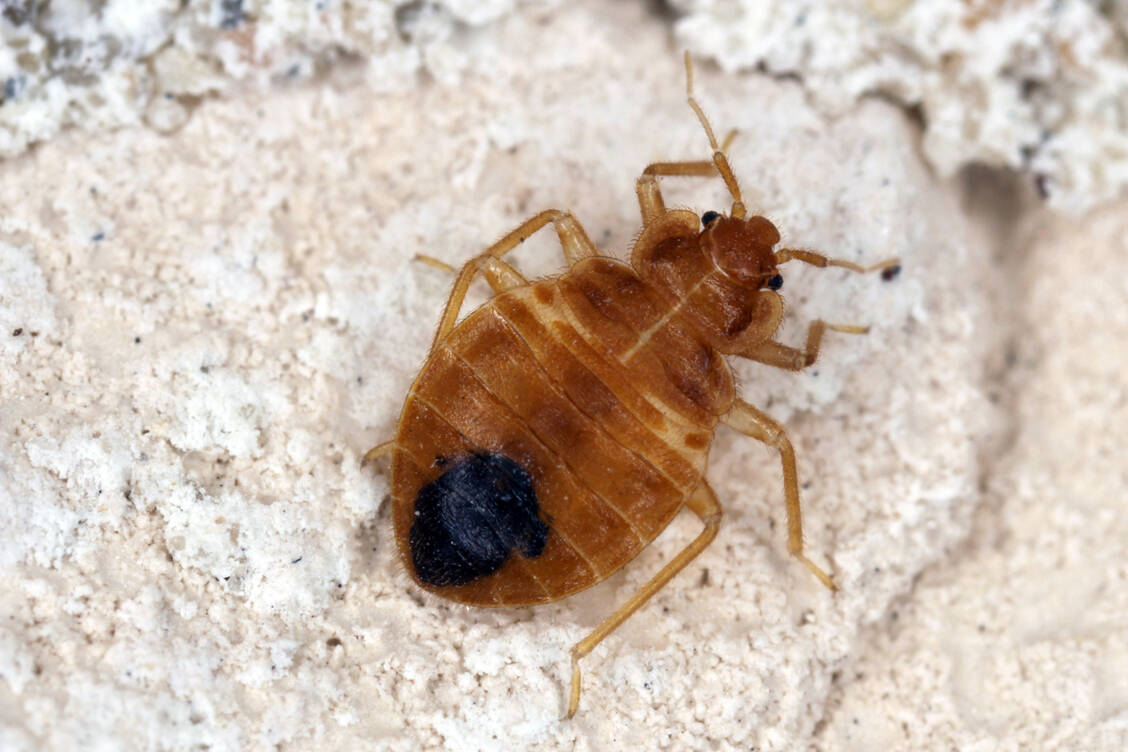They need a blood meal every three to five days. Adult animals can also survive periods of star-vation of up to eight months. The parasites suck for between five to ten minutes and usually bite several times until they hit a blood vessel. The bites are in a typical row-like arrangement, the so-called »bug street« or ungrouped. When sucking, the insects secrete saliva. This not only contains anticoagulant substances, but also anaesthetic and haemolytic components as well as sensitising proteins. Due to the anaesthetic effect, many people do not notice the lesions at first. These are preferably found on parts of the body such as the arms, shoulders, legs and face that are uncovered during sleep.
There is little reason to fear that the parasites transmit diseases when sucking. However, the cocktail of substances in the saliva leads to unpleasant skin reactions that characterise the clini-cal picture of cimicosis. The severity of the symptoms depends on the degree of sensitisation of the stung person. Those who are less sensitised develop 1 to 2 cm large wheals with a haemorr-hagic spot in the centre. In highly sensitised people, efflorescences can be up to 20 cm in size and urticarial exanthema can develop with very many bites. Severely itchy papules can persist for several days and tempt the patient to scratch. Bacterial superinfections and skin inflammations are possible. In severe chronic infestations, some patients develop anaemia in addition to the skin symptoms.






